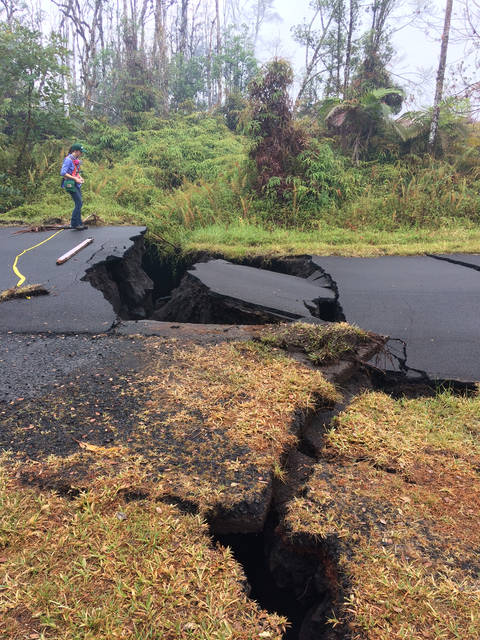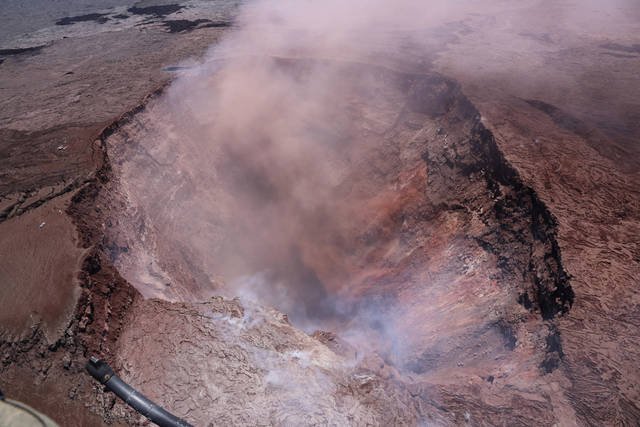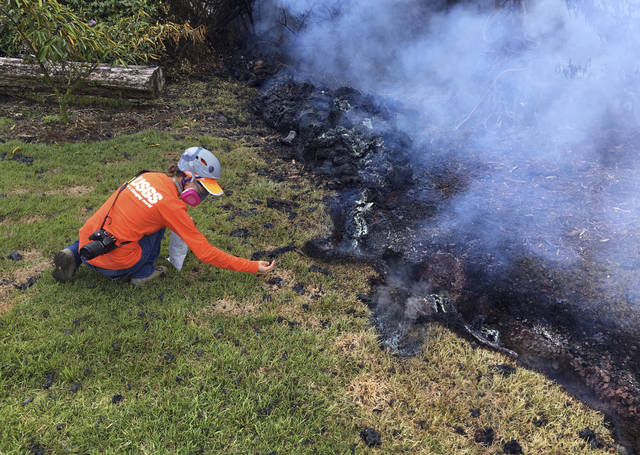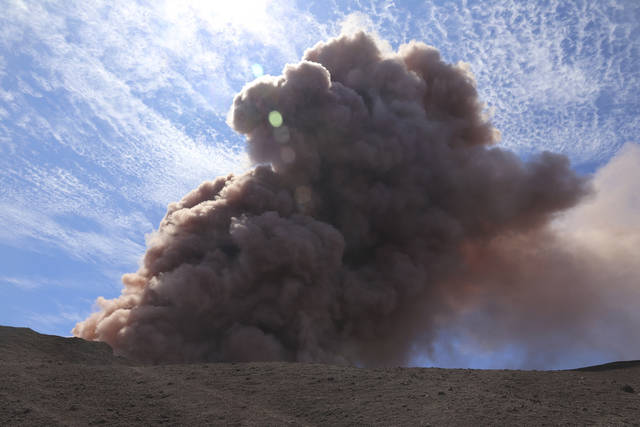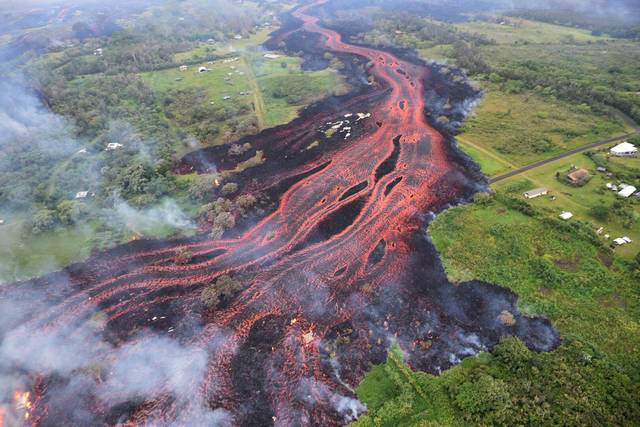HONOLULU — Hawaii’s Kilauea volcano may be disrupting life in paradise with its bursts of ash and bright-orange lava, but it also has scientists wide-eyed, eager to advance what’s known about volcanoes.
The good news is: Volcanoes reveal secrets when they’re rumbling, which means Kilauea is producing a bonanza of information.
While scientists monitored Big Island lava flows in 1955 and 1960, equipment then was far less sophisticated. Given new technology, they can now gather and study an unprecedented volume of data.
“Geophysical monitoring techniques that have come online in the last 20 years have now been deployed at Kilauea,” said George Bergantz, professor of earth and space sciences at the University of Washington. “We have this remarkable opportunity … to see many more scales of behavior both preceding and during this current volcanic crisis.”
Starting May 3, Kilauea has fountained lava and flung ash and rocks from its summit, destroying hundreds of homes, closing key highways and prompting health warnings. Kilauea is one of five volcanos that form the Big Island, and is a “shield” volcano — built up over time as lava flows layer on top of layer.
Technically speaking, it has been continuously erupting since 1983. But the recent combination of earthquakes shaking the ground, steam-driven explosions at the top, and lava creeping into a new area some 12 miles (20 kilometers) from the summit represents a departure from its behavior over the past 35 years, said Erik Klemetti, a volcanologist at Ohio’s Denison University.
What’s happening now is a bit more like the Kilauea of nearly a century ago. In 1924, steam explosions at the summit lasted for more than two weeks.
Scientists are looking into what caused the change and whether this shift in the volcano’s magma plumbing system will become the new normal.
Radar allows researchers to measure the height of ash plumes shooting from the summit, even when they occur at night. Plume heights are an effect of how much heat energy is released and the explosion’s intensity.
“It’s one of the key factors that dictates how far ash will be dispersed,” said Charles Mandeville, volcano hazards coordinator for the U.S. Geological Survey. The other is where the winds are blowing. Such knowledge is useful in alerting the public.
Scientists can also monitor where gas is emerging, as well as determine its composition and volume. They can even measure the subtle rise and fall of the ground over a broad area and time — down to seconds — which suggests when and where magma is pooling underground.
Discovering variations or correlations between past and present activity provides more clues on what’s happening. It also helps scientists understand past lava flows, anticipate what could occur next, and pinpoint signs or patterns before an eruption.
“You’re sort of zeroing in on finer and finer levels of detail into how the volcano works,” said Michael Poland, a U.S. Geological Survey volcanologist. “The more stuff you put on the volcano to make measurements, the more you realize there’s stuff going on that you never knew.”
Better technology has also meant U.S. Geological Survey scientists have been able to accurately forecast Kilauea’s behavior as it sputters over Puna, the island’s most affected district.
“They’ve been spot on,” said Janine Krippner, a volcanologist at Concord University in West Virginia. “It’s incredible — they’re looking at things happening below the surface, using the monitoring equipment that they have, the knowledge they have of past eruptions, and have been able to get people to not be in a deadly area.”
This is unfortunately not always possible, as nature can be unpredictable. On June 3, Guatemala’s Volcano of Fire sent a mixture of hot gas, rock and other material racing down its slopes and inundating the valley, killing nearly 100 people.
Krippner compared the Guatemala eruption to opening a can of soda after shaking it vigorously. Volcanic gas underneath created bubbles that expanded, increasing pressure that blew magma apart when it reached the surface, spewing cooled lava rocks ranging from the size of sand grains to boulders.
Explosions can be bigger, or occur differently, than expected, and that presents a learning opportunity for scientists, who work on computer models to map out areas that may be at higher risk in the future. “Looking at the footage afterward, we can start to tease out how these things actually work,” Krippner said, as it’s often too dangerous for experts to physically get close to an eruption.
Volcanic eruptions happen fairly regularly — as many as 60 occur worldwide each year — but many are in isolated areas, according to the U.S. Geological Survey.
After Kilauea’s 1924 summit explosions, the volcano entered a decade of piddly rumblings, followed by 18 years of silence. Experts say Kilauea may be heading toward years — even decades — of little or no activity.
For now, volcanologists feel a “tremendous amount of responsibility” to learn as much as possible from the volcano, Poland said. Its latest activity has destroyed about 400 homes — including roughly 280 in just the past few days — and displaced thousands of residents. Lava from Kilauea has also downed power lines and knifed across highways.
“It’s coming at a great cost in terms of impact on the lives and livelihoods of so many people — we owe it to the people of Puna to make sure that we learn the lessons the volcano is teaching us,” Poland said.
———
Ritter reported from New York.
———
Follow AP’s complete coverage of the Hawaii volcano here: https://apnews.com/tag/Kilauea


